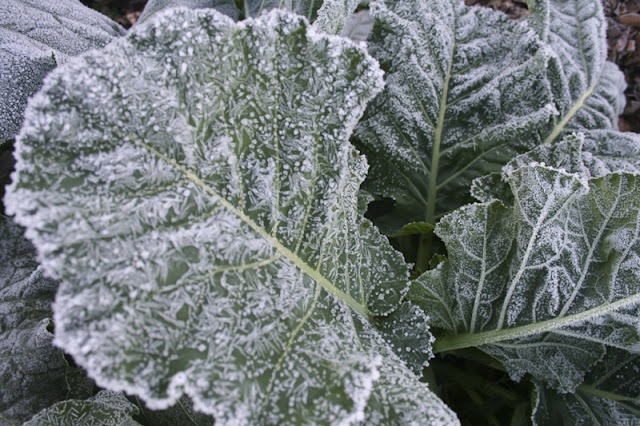A Gardener's Fix for the Winter Blues
If you are lucky enough to live in a place to experience all four seasons, you know what I mean when I say that fall is the
best season. The turning leaves of the
trees show off in all their glory as they glow in brilliant colors against a clear
blue sky. Everyone can agree, fall
possesses all of the best characteristics of summer. The grass is finally green
again after the stress of the summer heat fades, and the garden is churning out produce like
it has no idea that its days are numbered. As far as I’m concerned, fall could
go on forever. But it doesn’t. The days
regrettably grow shorter, and there is a sadness that comes along with this
time of the year that signals the end is near. That is, the end of the growing season.

For me, fall is filled with mixed feelings. During these finest, most splendid days of the year, I can’t help but feel like death is in the air. As a gardner who lives for the growing season, the best way to describe this predictable feeling that arrives in the fall is grief. We grieve in anticipation of the first hard freeze, knowing the garden will soon be laid to rest. We say farewell to the butterflies and the bees that have worked so hard on the garden's behalf all summer. But most of all, we grieve for the lush green surroundings that turn to brown for six months of the year.
While this feeling of sadness is inevitable, I still manage to find ways to cope each year by focusing instead on what can grow indoors, when the outdoors is inhospitable. Short of moving into a greenhouse for the winter (believe me, I've tried), here are some ways in which you can breathe life into your home during the dark winter months.

For me, fall is filled with mixed feelings. During these finest, most splendid days of the year, I can’t help but feel like death is in the air. As a gardner who lives for the growing season, the best way to describe this predictable feeling that arrives in the fall is grief. We grieve in anticipation of the first hard freeze, knowing the garden will soon be laid to rest. We say farewell to the butterflies and the bees that have worked so hard on the garden's behalf all summer. But most of all, we grieve for the lush green surroundings that turn to brown for six months of the year.
While this feeling of sadness is inevitable, I still manage to find ways to cope each year by focusing instead on what can grow indoors, when the outdoors is inhospitable. Short of moving into a greenhouse for the winter (believe me, I've tried), here are some ways in which you can breathe life into your home during the dark winter months.
5 Quick Fixes for the Winter Blues:
Buy fresh flowers often
You can bring life back to your home in an instant by buying an inexpensive bouquet of flowers a once or twice a month. Trader Joes gets me through the winter with its selection of affordable fresh flowers.:fill(transparent,1)/flowersforsale-589dca675f9b58819c8445a2.jpg)
Grow indoor bulbs
Forced blooming bulbs like amaryllis or narcissus are a delight to watch progress each day for a welcome winter bloom. Plant bulbs right after Christmas for fresh blossoms in 3-6 weeks. You are in good company with these kindred spirits, as they anxiously await spring every bit as much as you!Decorate with live greenery at the holidays
Evergreen branches and trimmings are rich in color and long lasting in the home. Use in vases or to decorate a table centerpiece or mantel. Fresh ever-greenery is a great reminder that even in the depths of winter, life is all around us.


Experiment with air plants
For pops of greenery in the home year around, try air plants. This vendor from Etsy sells high quality and very reasonably priced air plants. Place in a glass jar or elegantly display in a hanger for interest and inspiration in every room.Plant citrus seeds
While citrus fruits are fresh and in-season during the winter months, I love to harvest any lemon, orange, and grapefruit seeds I come across and plant directly in soil. In just a few weeks, sprouted seedlings declare a rebirth in preparation for a new year ahead. In summer, take your citrus seedlings outdoors. They will prefer sun and ample water. It will take a few years before the seedlings will be ready to bear fruit. In the mean time, enjoy as a houseplant in the winter, and as patio decor in the summer.

Try these tricks to give you something to remain inspired year around. The winter rest is a necessary time for our outdoor plants. It is also a nice time for us to enjoy the break from summer chores while we cozy up with a warm blanket and thumb through our seed catalogues in preparation for the season ahead.





Comments
Post a Comment